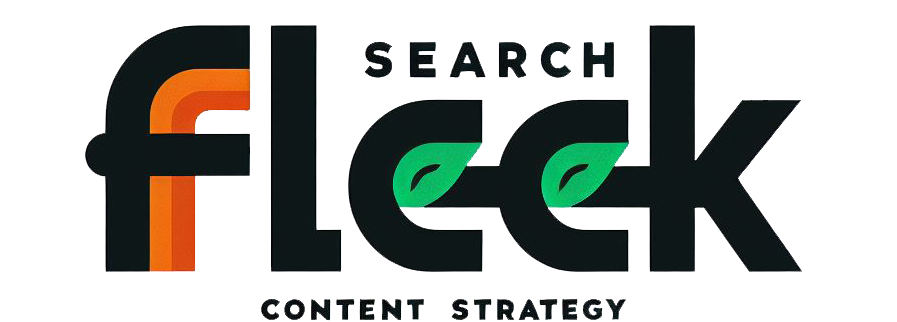In today’s competitive educational landscape, private and independent schools need to stand out. A well-crafted blog strategy can be a powerful tool for achieving this. But simply creating content isn’t enough.
Your blog posts need to not only inform and engage your audience, but also inspire them to take action, whether it’s contacting your admissions office, signing up for a school event, or simply learning more about your unique offerings.
This comprehensive guide dives deep into the world of school blogging, equipping you with the knowledge and resources needed to create a successful blog that drives results.
Why Blog? The Power of Content Marketing for Schools

The benefits of a well-maintained school blog are numerous:
- Increased Brand Awareness and Reach: A blog allows you to share your school’s story with a wider audience, extending your reach beyond your local community.
- Improved SEO and Website Traffic: Regularly publishing informative content optimized for search engines can significantly boost your website’s ranking and attract organic traffic.
- Thought Leadership and Establishing Expertise: By showcasing your faculty’s knowledge and insights, you can position your school as a leader in education.
- Engaging with Prospective and Current Families: Your blog provides a platform to connect with families on a more personal level, fostering trust and transparency.
- Building Trust and Transparency: Regular blog posts allow you to share updates, address concerns, and highlight the positive aspects of your school community.
Of course, there are challenges to consider:
- Time Constraints and Resource Allocation: Creating consistent content requires planning and effort. Delegate tasks, involve passionate staff members, and consider external resources.
- Content Creation Consistency: Maintaining a regular publishing schedule is crucial. Develop an editorial calendar and establish a realistic workflow.
- Measuring ROI (Return on Investment): Track key metrics to see how your blog is impacting your goals. Analyze data and adjust your strategy accordingly.
Finding Your Voice: Developing a Blogging Strategy
Before diving into content creation, take a step back and develop a clear strategy. Here’s what you need to consider:
Defining Your Target Audience: Who are you trying to reach with your blog? Prospective parents, current families, alumni, or a combination?
Setting Clear Goals and Objectives: What do you want to achieve with your blog? Increase brand awareness, boost enrollment, or foster community engagement?
Identifying Your Unique Content Pillars: What sets your school apart? Focus on your academic programs, extracurricular activities, or your faculty’s expertise.
Establishing a Consistent Editorial Calendar: Plan your content calendar in advance to ensure a regular flow of fresh blog posts.
Content is King: Creating Compelling Blog Posts
The content you publish is the heart and soul of your blog. Here are some tips for crafting engaging blog posts that resonate with your audience:
Types of Blog Posts that Resonate with Parents
- Informative:
- Offer practical advice on choosing a school, managing homework loads, preparing for standardized tests, or navigating the college application process.
- Inspirational:
- Share student success stories, highlight alumni achievements, or showcase faculty awards and recognition.
- Insider’s Perspective:
- Provide a glimpse into the daily life of your school with virtual tours, student interviews, or a “Day in the Life of a Teacher” series.
- Curated Content:
- Compile valuable resources for parents, such as educational websites, book recommendations, or college admissions tips.
Crafting Engaging Blog Posts
Headlines that Grab Attention: Your headline is the first impression. Use strong verbs, keywords, and a sense of intrigue to entice readers to click.
Well-Structured Content with Subheadings and Visuals: Break up your text with clear subheadings and incorporate engaging visuals like photos, infographics, or videos.
Clear, Concise, and Informative Writing Style: Write in an easy-to-understand manner that avoids jargon. Aim for informative yet engaging content.
Incorporating Calls to Action (CTAs): Tell your readers what you want them to do next. This could be contacting admissions, downloading a resource, or subscribing to your newsletter.
SEO-Optimized Blog
Keyword Research and Implementation: Research relevant keywords that parents searching for private schools might use. Incorporate these keywords naturally throughout your content.
Meta Descriptions and Title Tags: Optimize your meta descriptions and title tags to accurately reflect your blog post’s content and entice search engine users to click.
Internal Linking: Link to relevant pages on your school website within your blog posts to improve user experience and website navigation.
Building Your Team: Who Should Contribute?

Creating a successful school blog doesn’t have to fall solely on your shoulders. Here’s how to build a team that can contribute valuable content and perspectives:
- Identifying Internal Resources: Look within your school community for passionate and knowledgeable individuals who can contribute content.
- Teachers: Leverage their expertise in specific subjects to create informative posts on curriculum, teaching methods, or student success stories.
- Administrators: Utilize their leadership perspective to write about school policies, upcoming events, or the benefits of your educational philosophy.
- Guidance Counselors: Partner with them to offer advice on topics like navigating the college application process, choosing the right extracurricular activities, or managing test anxiety.
- Alumni: Tap into their experiences to create inspiring stories about how your school prepared them for success.
- Establishing a Content Creation Workflow:
- Develop a clear system for assigning topics, managing deadlines, and editing content.
- Utilize online collaboration tools to streamline the process and ensure everyone is on the same page.
- Guest Blogging Opportunities: Partner with education experts, authors, or local businesses to offer fresh perspectives and broaden your reach.
Promoting Your Blog: Reaching Your Audience
Once you’ve created compelling content, it’s time to get it in front of the right people. Here are some effective ways to promote your blog:
Leveraging Social Media Platforms: Share your blog posts on social media platforms like Facebook, Twitter, and Instagram. Tailor your posts to each platform and use relevant hashtags.
Utilizing School Newsletters and Email Marketing Campaigns: Include snippets of your blog posts in your school newsletters and email campaigns to drive traffic to your blog.
Paid Advertising Options: Consider targeted social media ads to reach a wider audience and attract potential families interested in your school.
Cross-Promotion on Your School Website: Integrate your blog seamlessly into your school website. Promote your latest posts on your homepage, relevant program pages, and other high-traffic areas.
Measuring Success: Tracking Your Blog’s Impact
To ensure your blog is achieving its goals, you need to track its performance. Here’s what to consider:
- Key Performance Indicators (KPIs):
- Website traffic: Monitor how many people are visiting your blog.
- Engagement metrics: Track likes, comments, shares, and time spent on your blog posts.
- Lead generation and enrollment inquiries: Analyze how your blog is contributing to attracting new families.
- Analyzing Data and Making Adjustments:
- Regularly review your blog’s performance data.
- Identify what’s working well and what can be improved.
- Adapt your strategy based on your findings.
Keeping it Fresh: Maintaining a Vibrant Blog
A stale blog won’t keep your audience engaged. Here are some tips to keep your content fresh and exciting:
- Content Repurposing:
- Repurpose your blog content into different formats.
- Create podcasts or infographics based on popular blog posts.
- Develop short video snippets to share on social media.
- Engaging Your Audience:
- Encourage interaction with your readers.
- Host Q&A sessions on relevant topics.
- Run contests or polls to spark engagement.
- Staying Current with Educational Trends:
- Keep your finger on the pulse of current educational trends.
- Write about innovative teaching methods, educational technology advancements, or the future of education.
Conclusion: The Long-Term Benefits of School Blogging
In conclusion, a well-planned school blog isn’t just about informing parents. It’s about building a strong online presence, fostering a vibrant community, and ultimately, attracting new families to your school. With a little planning and these helpful tips, your blog can become a powerful tool that benefits your school for years to come.
By following these tips and consistently creating valuable content, you can transform your school blog into a powerful tool for engagement, growth, and long-term success.
Emon Anam, CEO of Search Fleek, isn't your typical digital guru. He brings a unique blend of financial expertise (former banking pro!) and digital marketing mastery to the table. A self-proclaimed "SEO Sherlock Holmes," Emon unlocks content secrets for local businesses and SaaS companies. But beyond the keyboard, he's a devoted family man, music enthusiast, and cricket champion. Let Emon weave your digital success story!
AI Writing Disclaimer
This post was initially researched and outlined by me. The content was then generated by an AI language model using the provided information. The final text has been reviewed and edited by me for accuracy and clarity.




